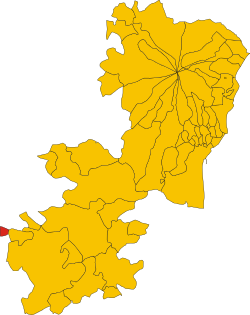
Butera is an Italian town and a commune in the province of Caltanissetta, in the southern part of the island of Sicily. It is bounded by the comuni of Gela, Licata, Mazzarino, Ravanusa and Riesi. It has a population of 4,653 (2017) and is 49 km (30 mi) from Caltanissetta, the province's capital.

Caltagirone is an inland city and municipality in the Metropolitan City of Catania, on the island of Sicily, Southern Italy, about 70 kilometres (43 mi) southwest of Catania.
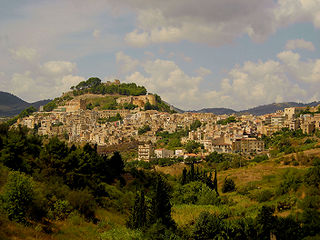
Calatafimi-Segesta, commonly known as simply Calatafimi, is a comune and a small town in the province of Trapani, in Sicily, southern Italy.

Piazza Armerina is a comune in the province of Enna of the autonomous island region of Sicily, southern Italy.

Capestrano is a comune and small town with 885 inhabitants (2017), in the Province of L'Aquila, Abruzzo, Italy. It is located in the Gran Sasso e Monti della Laga National Park.
Monteroni di Lecce (Salentino: Muntrùni is a town and comune in the province of Lecce, in Apulia, southern Italy. In 2008, it had 13,800 inhabitants. It is 7 kilometres from Lecce, in the Salento – the historic Terra d'Otranto.

Pacentro is a comune of 1,279 inhabitants of the province of L'Aquila in Abruzzo, Italy. It is a well-preserved historic medieval village located in central Italy, several kilometers from the City of Sulmona about 170 kilometres (110 mi) east of Rome. It is one of I Borghi più belli d'Italia.
Naso is a town and comune in northeastern Sicily, Italy, administratively part of the Metropolitan City of Messina. As of 2011, it had a population of 4,070.
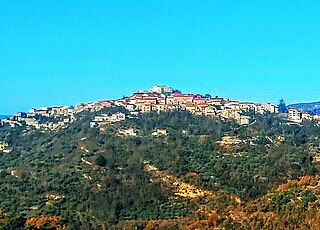
Montecalvo Irpino is a town and comune in the province of Avellino, Campania, southern Italy.
San Marzano sul Sarno is a town and comune in the province of Salerno in the Campania region of southern Italy, situated about halfway between Autostrade A3 and A30.

Fagnano Castello is a town and comune in the province of Cosenza in the Calabria region of southern Italy. Fagnano Castello is located on Mount Caloria, part of the Coastal mountain range of Calabria, about an hour north of Cosenza.

Paola is an Italian comune of 15,408 inhabitants in the province of Cosenza in Calabria.
Cesa is a comune (municipality) in the Province of Caserta in the Italian region Campania, located about 15 kilometres (9 mi) north of Naples and about 14 kilometres (9 mi) southwest of Caserta.
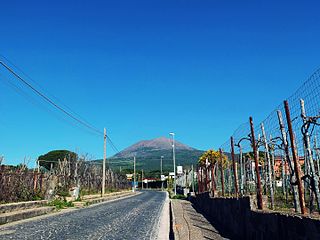
Boscotrecase is a town and municipality of 9,790 inhabitants in the metropolitan city of Naples in Campania, Italy.

Ravanusa is a comune (municipality) in the Province of Agrigento in the Italian region Sicily, located about 110 kilometres (68 mi) southeast of Palermo and about 35 kilometres (22 mi) east of Agrigento.

San Biagio Platani is a comune (municipality) in the Province of Agrigento in the Italian region Sicily, located about 70 kilometres (43 mi) south of Palermo and about 20 kilometres (12 mi) north of Agrigento. As of 31 December 2004, it had a population of 3,689 and an area of 42.4 square kilometres (16.4 sq mi). San Biagio Platani is famous for its "Easter Arches"
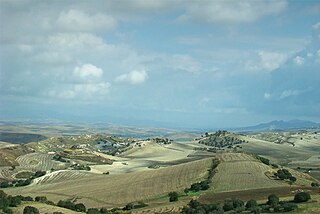
San Michele di Ganzaria is a comune (municipality) in the Metropolitan City of Catania in the Italian region Sicily, located about 130 kilometres (81 mi) southeast of Palermo and about 60 kilometres (37 mi) southwest of Catania. The town was settled and historically inhabited by the Arbëreshë community.
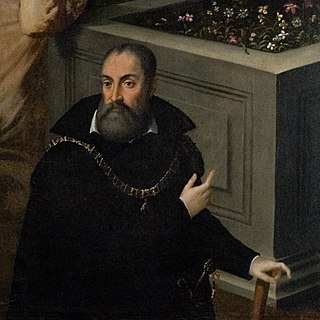
Ferrante I Gonzaga was an Italian condottiero, a member of the House of Gonzaga and the founder of the branch of the Gonzaga of Guastalla.

Leoluca, also Leone Luca, Leo Luke of Corleone, Saint Leoluca, or Luke of Sicily was the abbot and wonderworker of the monastery of Mount Mula in Calabria, and a founder of Italo-Greek monasticism in southern Italy. He is venerated as a saint in the Roman Catholic and Eastern Orthodox churches.
The Pinacoteca Comunale of Piazza Armerina is the civic art gallery of the town of Piazza Armerina, province of Enna, region of Sicily, Italy.

